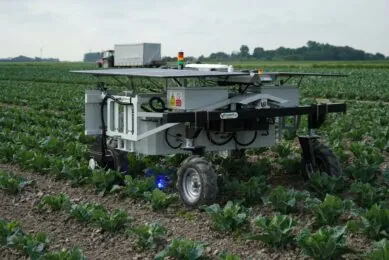How to (effectively) prepare for the arrival of a robot on your farm

Welcoming a new agricultural machine raises many questions – its management, its adaptation to a specific environment, its profitability, its long-term efficiency… And this is all the more true when this machine is a robot! Proper preparation and the ability to deal with change are the key factors in order to successfully take this leap into the unknown.
Although robotics is among the solutions for the future of agriculture, these technologies are not yet widely used in the professional landscape. Along the demonstrations, exhibitions and feedback from equipped farmers, the professionals of agriculture gradually take this new reality into account. But when the robot is about to arrive at your farm, a growing number of questions are being raised. It is therefore necessary to prepare your farm… and yourself!
Robot solution is not for everybody
It’s important to keep in mind that the robot solution is not for everybody. That’s why we at Naïo Technologies conduct a preliminary farm visit to assess the possibility for the machine to adapt to the farm in question.
Sometimes, indeed, the characteristics and typology of the land – fragmented plots or sloping ground – do not lend themselves to the integration of a robot.
Text continues underneath image
Prepare the farm to welcome the robot
But once the constraints have been removed and the adaptability of the robot has been validated, it is necessary to prepare the farm for the robot. This involves the development of the plots (creation of U-turn areas, for instance), the preparation of the growing beds to facilitate inter-row cultivation, the arrangement of the robot’s transportation from one plot to another, etc.
We had to grope, experiment, and adapt to achieve the result we wanted
Valentin André, St Germain-Chambourcy School of Agriculture and Horticulture
The machine is indivisible from its specification, and the terms of this specification have to be strictly complied with to avoid any disappointment when using the machine. Only when we consent to these sometimes necessary changes, can work be achieved peacefully and can farmers fully benefit from their new equipment.
Take the time to familiarise with one another
Valentin André is a market gardening and arboriculture farm worker at the St Germain-Chambourcy School of Agriculture and Horticulture. Heading into his fourth year of using the weeding robot Oz, he recalls: “We had to grope, experiment, and adapt to achieve the result we wanted. Prior to its delivery, we had figured that we needed to create space between the rows to provide a passage for the robot. But the first rehabilitation did not meet all the requirements. Consequently, the next season, we changed the alignment of some of the growing beds and everything has been working very well ever since.”
Text continues underneath image
Mindset
Indeed, skill improvement can only be achieved through experience, but our mindset is what will make the difference when adopting a robot: if you expect an optimum result right from the first outings, you are wasting your time.
The scope for improvement from year to year must be integrated early by everyone. This potential for progress depends on the permanent IT and mechanical developments accomplished by Naio, as much as on the understanding of how the machine works and how it’s handled, which improves along time for the farmers.
Learn to trust
The farmers work in collaboration with the manufacturer through theoretical training and live hands-on learning. Naio’s advisors are always available to answer questions, provide guidance or solve problems on the ground.
Although the expected time-saving is tangible when the robot is autonomous, know that this time will have to be reinvested in learning, at least the first year
Mathilde Ceaux
Besides, by watching the robot work in the fields, the self-training comes naturally. Nonetheless, although the expected time-saving is tangible when the robot is autonomous, know that this time will have to be reinvested in learning, at least the first year.
“Very often, and even when it was not necessary, I activated the robot and left it alone while I was not far away working on something else, just to check if everything was on track. Trust grows step by step, to the point we feel assured that we can properly program the machine and that the machine can get the work done as we expect it to”, asserts Valentin André.
As an experienced user, he can now step away and let Oz weed autonomously: “I know that the robot fully serves its purpose, that all the safety features are activated and that meanwhile, I can work on something else without having to worry.”
Text continues underneath image
Robot is not magic
What is the trick to make the magic work between the farmer and his robot? Maybe the key is to remember that the robot is not magic. It is just another agricultural machine, a new, somewhat special tool that we need to learn to manage before letting roam along the rows.
We need also to bear in mind that success hinges on teamwork; a trio including the robot that carries out the tasks for which it was programmed, the manufacturer who works at continuously improving the robot to meet the needs, and the user who must be prepared to change a few habits and open up to new practices.
Join 17,000+ subscribers
Subscribe to our newsletter to stay updated about all the need-to-know content in the agricultural sector, two times a week.



